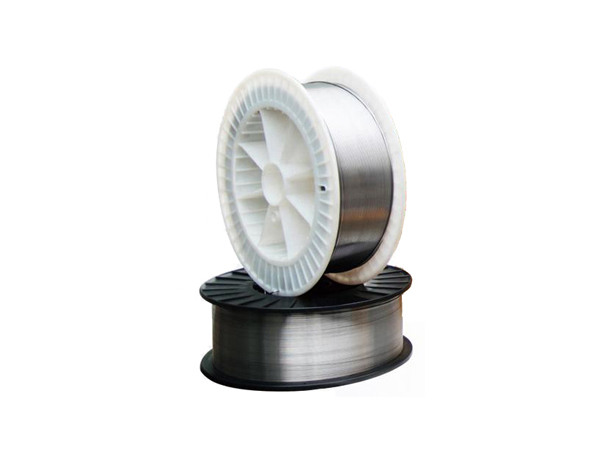Gas shielded flux-cored welding wire has been developed and marketed as early as the early 1950s, but it was not until 1957 that it began to be widely used commercially. This method can be said to be a combination of the advantages of submerged arc welding and CO2 welding (referring to solid). A soft and stable arc and low splash are produced when the flux is coated in the wire and protected by peripheral CO2 gas. At the beginning of development, only large-diameter welding wire (2.0-4.0mm) was used for flat welding and horizontal welding of major workpieces. It was not until the beginning of the development of small diameter welding wires in 1972 that the field of flux-cored welding wires was greatly expanded.
The self-shielded flux-cored wire was developed shortly after the introduction of gas-shielded flux-cored wire, and it was quickly recognized by the industry for specific uses.

Manufacturing of flux cored wire
The manufacturing process of flux-cored welding wire is very rigorous. Since the filler metal comes from the steel sheet and the components contained in the flux, the size and chemical composition must be checked in detail before manufacturing to ensure quality.
Due to the limitation of the internal space of the welding material, the size of the flux particles becomes more and more important. The particles form a bird's nest and are combined together, and the flux composition elements are not uniform.
Most of the flux-cored welding wire is rolled into a U-shaped section by a flat metal thin strip. The granular flux is filled in the U-shaped metal groove and then undergoes the final sealing and rolling step to tightly roll the flux press in the tube-shaped welding wire.
The welding wire rolled into a tube shape is then subjected to a series of pulling actions to become the final required wire diameter. This pulling action can also make the filled flux evenly fixed in the welding wire skin.
During the manufacturing process, how to prevent some wires from forming hollows (without flux) due to poor control in the welding wire is the key to the production quality of flux-cored welding wires. In addition, the surface of the wire must be smooth and clean, otherwise it will affect the smoothness of the wire feed and the speed of the welding current. Welding wire is packaged in rolls or drums to avoid entanglement or breakage of the wires. Usually, the coiled wire is wrapped in a plastic sleeve and placed with a desiccant to prevent the material from being damp. The wrapped material is then sent out in a cardboard box.
When the skin is thicker, the section is mostly BUTT and the amount of welding is small. Most of carbon steel and low alloy steel, wire diameters of 2.8mm and below are all sections of this shape, such as stainless steel. When alloys and the wire diameter are large, a larger space is required in the wire to contain the flux and alloy elements, and the cross-sectional shape of the flux and alloy elements is mostly overlapped or heart-shaped (LAP and HEART SHAPED) joints.
The above information is provided by tig welding guns suppliers.






